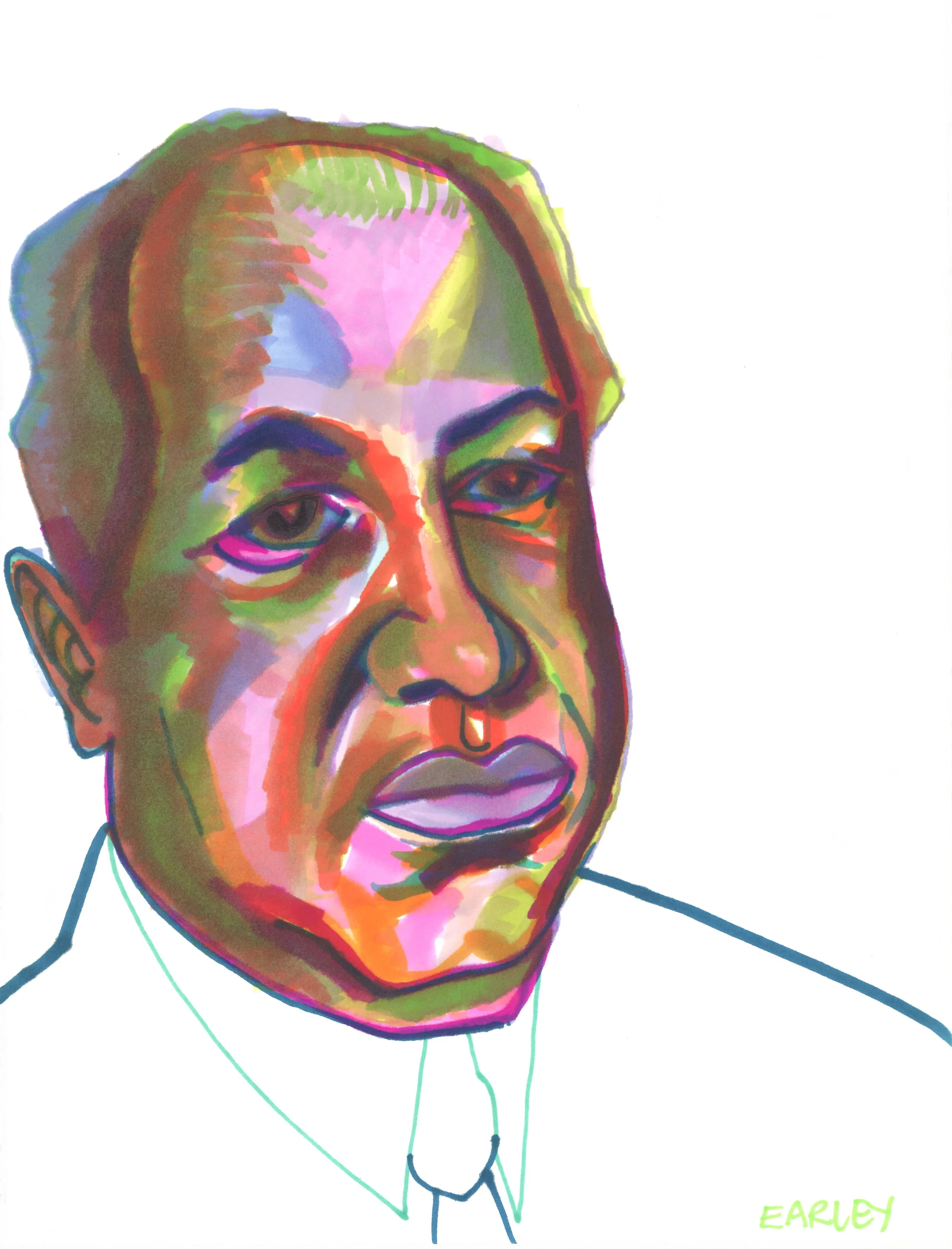RIM Blog
RIM: A Transdisciplinary Space for Research Collaboration and Multimodal Expression
by Anthony Kwame Harrison
Edward S. Diggs Professor in Humanities
Associate Professor of Sociology
Virginia Tech, USA
Last November I had my first art gallery exhibition, an installation showcasing some of my creative scholarship in collaboration with other artist/academics I recruited to join me. Among them were Virginia state arts commissioner, Asa Jackson; my colleague in cinema studies, Karl Precoda; my former Ph.D. student and current assistant professor of sociology at Morgan State University, Corey Miles; recent Virginia Tech graduate and photographer, Richard Randolph; musician, visual artists, and mental health advocate, Kevin Earley; and hip hop producer and Candlewax Records CEO, BlakeNine. The White Reign exhibition followed from a special issue of the French arts-based journal Dysfunction, which I was invited to put together for the occasion of the second Race in the Marketplace Research Forum last summer in Paris.
Safety Map (by Asa Jackson)
White Reign documents two journeys. My scholarly journey to learn about the historical figure James Albert “Billboard” Jackson and my autoethnographic journey to his hometown (Bellefonte, Pennsylvania) in pursuit of that mission. The exhibition, which ran at the Armory Gallery in my hometown (Blacksburg, Virginia) from November seventh through Thanksgiving, was curated by Gallery Director and longtime friend, Deb Sim. It was covered by the local National Public Radio station and I was touched by how many people attended the opening where Asa Jackson (who had four exhibited pieces) and I discussed our work.
The exhibition and journal issue brought attention to the experiences of non-white travelers as they move through the White Supremacist spaces of middle America. I was pleased with some of the discussions I had or was privy to in the weeks following the opening. It was not so much the depth or resolution of these conversations, but rather just the fact that people were having them that signaled a positive outcome for me. White Reign reflects on the everyday marketplace(s) Black travelers engage fifty years following America’s long history of state authorized discrimination, segregation, and dehumanization. It considers the recent rise of the Alt Right in conversation with Jim Crow. Its entry points are the Negro Motorist Green Book and Billboard Jackson’s unrecognized contributions to it.
Billboard Jackson in his 50’s (by Kevin Earley).
Jackson was the first Black member of the American Marketing Association and a founding member of the Association of Business Education (today known as the National Business Education Association). Prior to joining the AMA, Jackson had longstanding affiliations with the Association of Trade & Commerce and the National Negro Business League.[1] His extensive career includes editing a featured section of Billboard Magazine between 1920 and 1925, and founding the U.S. Commerce Department’s Division of Negro Affairs under then-Secretary of Commerce and future U.S. President, Herbert Hoover. In 1934 Jackson was appointed as “special representative to the black community” for the Esso Standard Oil Company of New Jersey, a pioneering position that would earn him the title “dean of [the first generation of] national black special-markets men.”[2] Throughout his time in these and other distinguished positions, Jackson compiled an impressive list of hotels, rooming houses, and private homes that welcomed Black travelers. This list, in combination with postal worker Victor Green’s extensive postal service connections,[3] would facilitate the creation of the first Green Book in 1936. The publisher of these travel guides, which were distributed through Esso gas stations, considered Standard Oil (“S.O.”) to be its most important corporate sponsor.
Whereas the history of race and consumer marketing is woefully under-researched, important works by scholars such as Judy Foster Davis,[4] Yasmin Ibrahim,[5] Marcel Rosa-Salas,[6] and Robert Weems[7] are all examples of the critical contributions that historical studies can make to re-envisioning how race impacts a host of market-based fields. Billboard Jackson’s historical invisibility is indicative of how much work is yet to be done on the history of Black business and entrepreneurship
White Reign, both the journal and exhibition, represent my effort to join these ongoing discussions. It showcases how the Race in the Marketplace (RIM) network foregrounds not only rigorous social-science scholarship on race (and attendant identity coordinates like class, gender, sexuality, age, and ability), but also humanistic/artistic explorations of how meanings around race and marketplaces form and matter. My contributions to White Reign came about through extensive historical/archival research, travel to an all-white town, and collaborations with artists/friends to form and perform various expressive pieces. Through these paintings, illustrations, writings, photographs, films, and musical/lyrical essays, I hope to spark curiosity about Jackson and his Green Book connections, and to cultivate deeper understandings of race’s pernicious and pervasive role in structuring social inequality and mediating micro-social relationships.
Ghost of the Confederate Soldier (by Asa Jackson)
For someone like me—an anthropologist working primarily in popular music studies—finding a home at the intersections of race and markets might be expected. Musicologist David Bracket highlights how marketplace music categories (i.e. genres) associated with African Americans and explicitly tied to race have historically been the most unstable[8]—therefore warranting continued scholarly attention. What’s surprising to me is how peripheral my popular music scholarship, on hip hop and racial identification, has thus far been to my involvement with RIM. Curiously, I’ve made more substantive connections around my work on race and alpine skiing[9] and, of course, Black travel and Billboard Jackson. Part of this is a testament to the broadness and inclusiveness of RIM’s conception of marketplace, as a space of transactional relations: economic, social, philosophical, representational, and the like. RIM promotes research that builds towards the creation of just, inclusive, and equitable markets. It does this through a variety of un-disciplined angles and transdisciplinary avenues. Its methodologies and modes of research representation are as multifaceted as the tyrannical social forces it forms in opposition to.
——————————————
[1] The National Negro Business League was founded by Booker T. Washington in 1900.
[2] Chambers, J. (2009). Madison Avenue and the color line: African Americans in the advertising industry. Philadelphia, PA: University of Pennsylvania Press, p. 61.
[3] The Green Book.(2013, September). The Postal Record, 126 (9): 22-25.
[4] Davis, J. F. (2013). Realizing marketplace opportunity: How research on the black consumer market influenced mainstream marketers, 1920-1970. Journal of Historical Research in Marketing, 5 (4): 471-493. https://doi.org/10.1108/JHRM-02-2013-0006; Davis, J. F. (2018). Selling whiteness?–A critical review of the literature on marketing and racism. Journal of Marketing Management, 34(1-2): 134-177. https://doi.org/10.1080/0267257X.2017.1395902
[5] Ibrahim, Y. (2016). The Negro marketing dilemma: Dominant marketing discourses in the US from the 1950s to the 1970s. Journal of Historical Research in Marketing, 8 (4): 545-563.
[6] Rosa-Salas, M. (2019). Making the mass white: How racial segregation shaped consumer segmentation. In Race in the Marketplace: Crossing Critical Boundaries, edited by G. D. Johnson, K. D. Thomas, A. K. Harrison, and S. A. Grier (pp. 21-38). New York: Palgrave Macmillan.
[7] Weems, R. A. 1998. Desegregating the Dollar. New York: NYU Press.
[8] Bracket, D. (2012). What a difference a name makes: Two instances of African-American popular music. In The Cultural Study of Music: A Critical Introduction (2nd Edition), edited by M. Clayton, T. Herbert, and R. Middleton (pp. 127-139).New York: Routledge.
[9] Harrison, A. K. (2013). Black skiing, everyday racism, and the racial spatiality of whiteness. Journal of Sport and Social Issues, 37(4), 315-339. https://doi.org/10.1177/0193723513498607




